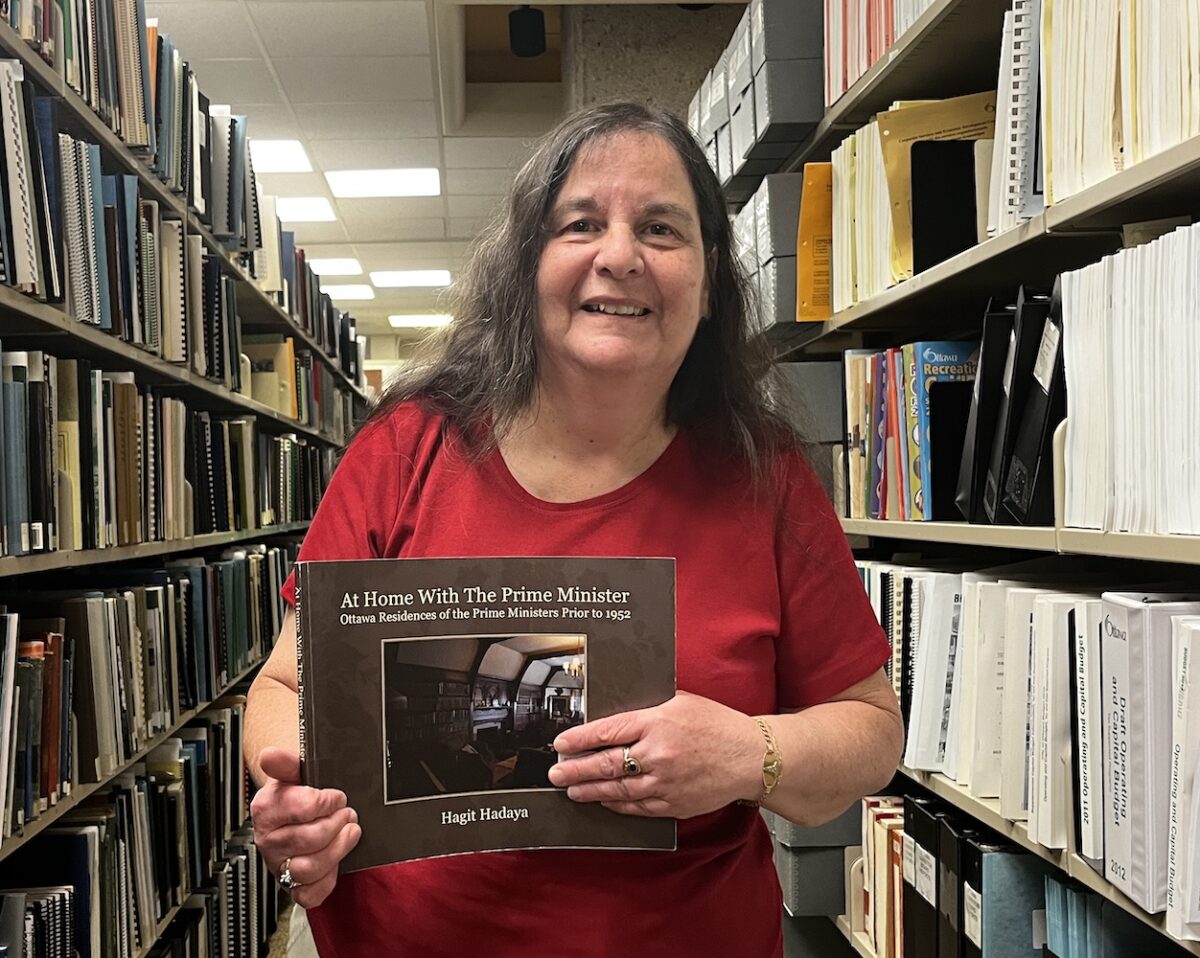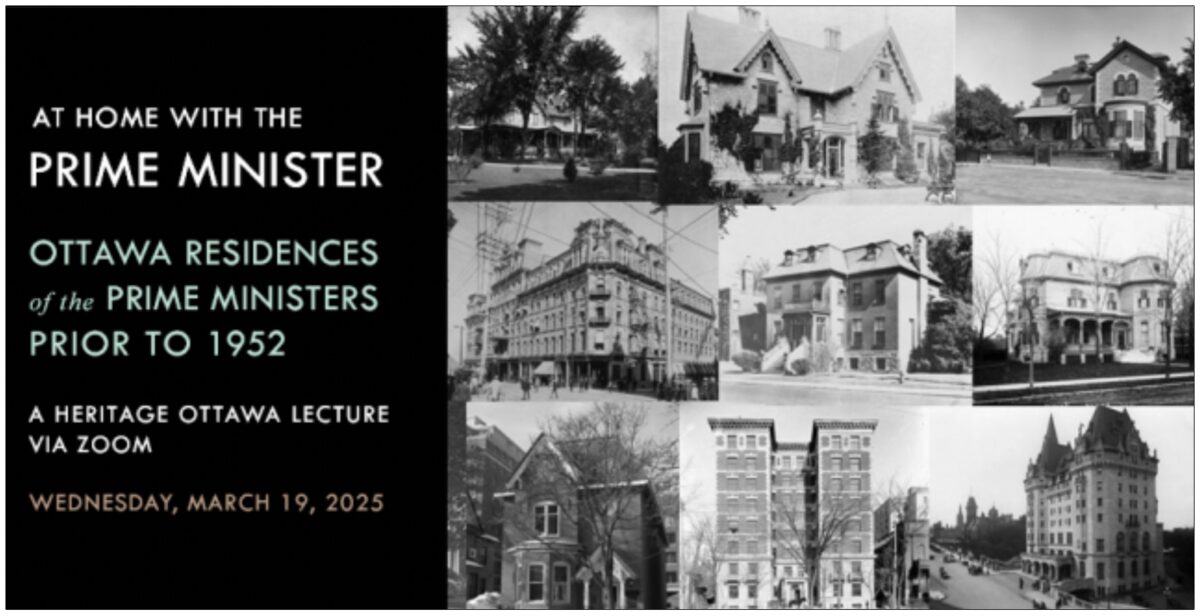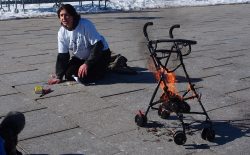With the future of 24 Sussex Drive in doubt and Canadians two weeks away from electing a new prime minister, local heritage experts are urging protection of the historic home and turning a spotlight on the capital’s rich history of prime ministerial residences.
Years of neglect have put the official residence of the prime minister at risk. In one of his last acts as prime minister, Justin Trudeau ordered a review of the future role and management of 24 Sussex Drive.
Given the current mid-renovation state of the historic building, the winner of this month’s vote will have to live elsewhere — possibly at Rideau Cottage, the residence on the Rideau Hall estate across from 24 Sussex Drive where Trudeau and his family lived for much of the past decade.

The Sussex Drive home has been the official residence of Canada’s prime minister since 1951, but to Ottawa historians, it’s more than just a home. It’s a testament to the city’s historical character and a symbol of national identity.

To others, however, the historic building has been so controversial and is in such disrepair today it’s not worth the massive cost of renovating. Today, 24 Sussex Drrive sits, uninhabitable, with its interior gutted.
“The problem with 24 Sussex has always been the political element,” said Peter Coffman, an architectural historian and associate professor at Carleton University. “Spending large amounts of money on the house the prime minister lives in is seen as very politically risky, especially if the prime minister isn’t enormously popular.”
Trudeau’s 11th-hour directive sought to resolve the issue by tasking then-Public Services and Procurement Minister Jean-Yves Duclos with developing a plan with options for an official prime ministerial residence. He also asked Public Safety Minister David McGuinty to provide security planning.
Not enough for Coffman who says the move didn’t give much-needed clear direction.
“We have to have an official presence for the prime minister,” he said.
Another issue is that Canada has not had a prime minister representing an Ottawa riding since Sir John A. Macdonald took the Carleton riding in 1882 in his comeback win as head of government.
That will change this year as the two main contenders Carney and Conservative leader Pierre Poilievre are running side-by-side in Nepean and Carleton ridings respectively.
The problem with 24 Sussex has always been the political element. Spending large amounts of money on the house the prime minister lives in is seen as very politically risky, especially if the prime minister isn’t enormously popular.
— Peter Coffman, architectural historian and associate professor at Carleton University
The winner will be expected to live in an official residence since it would be have be used for hosting events and upholding the symbolism of a home for the head of Canada’s government.
Historically, prime ministers from outside of Ottawa have faced the heavy financial and personal burdens of maintaining two homes, which is why 24 Sussex Drive — already a well-known mansion from the 19th century — was acquired as an official PM’s residence nearly 75 years ago.
“There are many chapters to its story, only some of which are the result of its being the official residence of the prime minister,” said Coffman. He describes the building as “drenched in Canadian history.”
It was built around Confederation for the wealthy lumber baron and Member of Parliament Joseph Merrill Currier, who also once owned the Ottawa Citizen. The “extraordinary” house spoke to Ottawa’s past as a global centre for the lumber industry, Heritage Ottawa’s past president Leslie Maitland says.
“It’s a real anchor in our understanding of the national capital,” she said.
But after upgrades in 1951 to make it suitable for a prime minister’s house when Louis St. Laurent moved in, 24 Sussex received few substantive repairs or renovations. Heritage Ottawa has long advocated for its proper rehabilitation.
“If you had owned a house since 1951 and not done any upgrades, your insurance company would have words with you,” Maitland said, noting she wasn’t surprised to hear reports in recent years that rats had taken up residence in the building.
Before 24 Sussex became the official residence, Canadian prime ministers had to find their own accommodations in Ottawa.
Few of these pre-24 Sussex prime ministerial homes remain, a fact lamented by architectural historian Hagit Hadaya, who wrote a book on the subject titled At Home With the Prime Minister: Ottawa Residences of the Prime Minister Before the 1950s.
Hadaya said the stories behind the other homes offer insight into the domestic lives of former leaders and tell us what they thought of Ottawa and how they integrated into the city.
“It actually shows you what Ottawa was like when they were living here,” Hadaya said. “It connects you to the history of Ottawa.”

Many of the buildings have been demolished, but the ones still standing offer a broad overview of what Ottawa looked like before the 1950s and how the city changed and developed, said Hadaya.
“They really lived like they were part of the neighbourhood,” she said. “They were really part of Ottawa life.”
We know from neighbourhood history that Wilfrid Laurier — prime minister from 1896 to 1911 — would take the tramway to work from his home in Sandy Hill, a short distance east of Parliament Hill. And William Lyon Mackenzie King, who moved into Laurier’s old house during his time as prime minister from the 1920s to 1948 — was often seen walking his dog in the area.
Known today as Laurier House, the home is now a Parks Canada-managed National Historic Site.
“You could really do something tremendous and imaginative with this property, either as a residence or as an interpretation or visitor centre that would continue to allow Canadians to remain in contact with this property,” said Maitland.
The National Capital Commission has jurisdiction over the property, but Trudeau’s directive to examine future options recommends it be shifted to Public Services and Procurement Canada.
“Anything is possible if we’re willing to pay for it,” said Coffman. With a background in medieval architecture, Coffman emphasizes that the less the country invests in completing major renovations of the structure, the more expensive the building’s upkeep will become.
In short, 24 Sussex can be fixed, but it will be expensive, Coffman said. Some estimates put the price tag at up to $42 million in today’s dollars.
In his blog posts about the building, Coffman urges a plan to retrofit sustainability into the home. This could include addressing the outdated wiring and inefficient heating system.
Whether it’s always the PM’s home or it becomes something else, these local heritage experts are adamant about the need to preserve 24 Sussex Drive.
“It doesn’t belong to any one prime minister, it belongs to all Canadians,” said Maitland. “We’re taxpayers, we see symbolic value, we embrace it because we’re Canadians, but also because we pay taxes in this country — and we should have our properties well maintained.”




